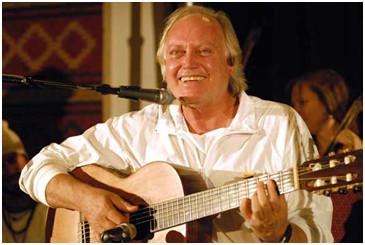Relax, I don’t mean you all have to do Mozart and Beethoven. I’ll explain what I mean by good music, shortly.
Years ago, I planned to write a book about the power of beauty in our lives. I was world famous as an environmental doctor and it seemed only right to take an interest in this “environmental” health factor. I strongly believed that being surrounded by beauty was enhancing and restorative.
Spanish philosopher George Santayana (1863 – 1952) wrote his own book The Sense of Beauty (1896), which I find a bit dull. Beauty, as Santayana writes, is a “manifestation of perfection”, and “the sense of beauty has a more important place in life than aesthetic theory has ever taken in philosophy.”[Wiki]
Certainly, it is easier to confirm the opposite: ugliness, chaos and negative energies are very disruptive. I walked out of the movie Slumdog Millionaire (2008) because I was so repulsed by the surroundings of the chief character, living in poverty in Mumbai (Bombay)! Yuck!
Well, my book never got written at all. But I am keen on the topic of beautiful music for healing. I see that Randall McClellan wrote instead of The Healing Forces of Music (Element, 1991). Finding that again on my bookshelves the other day set me off musing.
Will you join me?
What Is Music?
I often ask myself that question, when listening to lovely sounds. I have always supposed that music comes from “somewhere else”, some other plane or dimension. It seems not quite earthly, somehow.
Physicists—or rather mathematicians—will tell us that there is a certain frequency ratio and harmony that creates the warmth of music. Shakespeare (Romeo and Juliet) mentions “sweet divisions” and that’s it, fundamentally. An octave (meaning 8 notes) is definitely in the fabric of reality: it’s based on the next highest repeat being exactly TWICE the frequency of the existing note.
Even tone deaf people can recognize that: it’s the “same note” but higher. The question is: what do you do with the gap? How do you divide it up?
Classical Western music divides it into 12 semitones, which can be arranged into a major (bright) scale, or a minor (sad) scale. But that’s not the only music! Indian and Arabic music have many more steps or gaps, some of which sound quite discordant to us.
Celtic music—beloved the world over for its beautiful, mournful tones—is based on only five notes; hence the “pentatonic scale”. It’s sweet because there are no clashing discords.
But earlier music was even simpler and had just so-called fifths and fourths; a fifth is in a ratio of 3:2 to the key note (the “doh”) and a fourth is 4:3. That’s the old monks chanting music (plainsong). Again, no discords.
Even that old hippy philosopher Pythagoras picked up on these intervals as they are called, 2600 years ago, and attributed it to the beauty of the Cosmos—the “music of the spheres” as he is usually quoted saying.
[https://www.sciencenews.org/article/pythagoras-math-reality-music-spheres]
Well, I could go on (profs are supposed to know the tricky details and can easily become boring)… but that’s enough of that!
Discords
In our music, as opposed to world music, it was centuries before people were comfortable with a more colorful gap (interval), called a third. To us, today, it seems the richest part of music. Beatles, jazz and Beethoven wouldn’t be Beatles, jazz and Beethoven without thirds!
But we all know that music can become very clashing and discordant at times. It can be very “modern”, meaning there are deliberate discords. Or just really bad music, where the player is simply not competent.
The key to having fun and tolerating it—even enjoying it—is what we call resolution. The discords change over to something much sweeter. Think of the typical Amen. The Ah- is a gentle discord and it “resolves” onto the final –men.
The great advance of so-called Baroque (17th century) music was that composers, like Vivaldi, learned to delay the resolution more and more, until there was real musical tension (restlessness), finally leading to the relief of a resolution.
Bet most of you didn’t know all that! But do you need to know? Well, before answering that, let me provide you with a few simple examples of an octave, fifth, fourth and thirds.
Music and Health
There is no question that music can influence our wellbeing, for better or worse. Dorothy Retallack, working with plants in the 1970s, showed conclusively that plant health was influenced by music. Using three sound chambers, with a different music experience, she watched the plants and recorded their progress daily.
Her first experiment was to simply play a constant fixed tone (note). In the first of the three chambers, she played a steady tone continuously for eight hours. In the second, she played the tone for three hours intermittently, and in the third chamber, she played no tone at all. The plants in the first chamber, with the constant tone, died within fourteen days. The plants in the second chamber grew abundantly and were extremely healthy, even more so than the plants in the third chamber.
This was a very interesting outcome, very similar to the results that were obtained from experiments performed by the Muzak Corporation in the early 1940s to determine the effect of “background music” on factory workers. When music was played continuously, the workers were more fatigued and less productive, when played for several hours only, several times a day, the workers were more productive, and more alert and attentive than when no music was played.
[https://en.wikipedia.org/wiki/Muzak]
For another experiment, Retallack used two chambers (and fresh plants). She placed radios in each chamber. In one chamber, the radio was tuned to a local rock station, and in the other the radio played a station that featured soothing “middle-of-the-road” music. Only three hours a day of music was played in each chamber.
After two weeks, the plants in the soothing-music chamber were uniform in size, lush and green, and were leaning between 15 and 20 degrees toward the radio. The plants in the rock chamber had grown extremely tall and were drooping, the blooms had faded and the stems were bending away from the radio.
On the sixteenth day, plants in the rock chamber were dying. In the other chamber, the plants were alive, beautiful, and growing abundantly.
Subsequently, Retallack created a tape of rock music by Jimi Hendrix, Vanilla Fudge, and Led Zeppelin. It had a very negative effect on the plants. They turned away from the speakers. Most died rapidly.
But when played a tape of Indian classical raga music (sitar) and/or J S Bach, the plants leaned to the speakers, wrapped themselves around the speakers lovingly… and flourished. Raga scored best.
 Ravi Shankar (sitar) was a great favorite of the Beatles
Ravi Shankar (sitar) was a great favorite of the Beatles
Don Robertson following in Dorothy Retallack’s footsteps tried the effect of music by Arnold Schönberg, which is very “modern” and extremely discordant, with little or no resolution. All the plants subjected to this music died rapidly!
So this gives rise to the concept of “positive” and “negative” music. Sweet, harmonious music was of the former genre, while crashing, hard rock is clearly negative and actually KILLS! So beware.
The lesson: listen only to positive music. Or if you are driven by intellect to listen to the harsher music (why?) be sure to stage a “wash out” of good, clean and gentle music afterwards.
Healing With Music
I have written before of the astonishing work of Fabian Maman, an enlightened French composer, and singing ex-nun Helene Grimal (played by Julie Andrews… NO! Just kidding!) Together they studied the effect of low volume sound (30-40 decibels) on human cells.
 Fabien Maman
Fabien Maman
Using the nine-note so-called Ionian Scale (C-D-E-F-G-A-B-C-D), Grimal and Maman observed that when exposed to sound, cancer cells lost structural integrity until they exploded at the 14-minute mark. Far more dramatic was the sound of a human voice — the cells were destroyed at the nine-minute mark.
Next, Maman and Grimal worked with two women with breast cancer. For one month, the women devoted three-and-a-half hours a day to “toning” or singing the scale. One woman’s tumor became undetectable, meaning it simply disappeared. The other woman underwent surgery. Her surgeon reported that her tumor had shrunk dramatically and “dried up.” It was removed and the woman had a complete recovery and remission.
They learned to sing away cancer!
I told this story in more detail on my website. Please visit: https://alternative-doctor.com/music-killing-cancer-cells/
The healing power of music! Told ya!
Here’s to a long and harmonious life…
To Your Good Health,Prof. Keith Scott-Mumby
The Official Alternative Doctor




